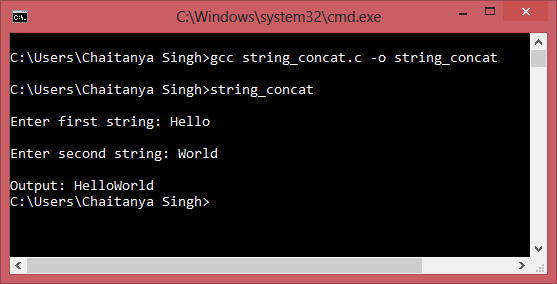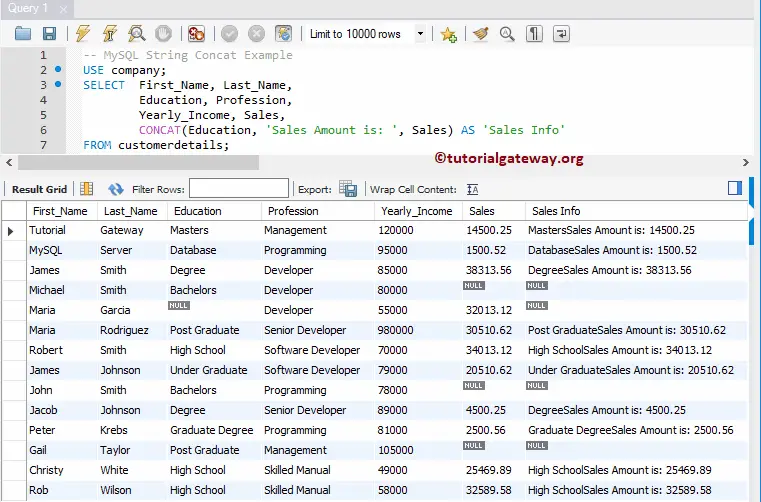

Furthermore, the concat() method only accepts String values while the + operator will silently convert the argument to a String (using the toString() method for objects). If a is null, then a.concat(b) throws a NullPointerException but a+=b will treat the original value of a as if it were null.
#MYSQL CONCAT INTEGER VALUES INTO STRING HOW TO#
MySQL CONCAT Function: How to Concatenate Strings in MySQL CONCAT will let you. However, since this example is rather contrived, this shouldn't be an issue for "genuine" strings where the normal ASCII sort order should be acceptable.Ĭleaned up (extraneous fields removed) version - same result.Firstly, there's a slight difference in semantics. Note: If all the string passed in SQL CONCAT function have a NULL value. 9, 10, 11 - it appears as 10, 11, 9 - which is the individual csv strings sorted ASCII wise, not numerically. SELECT id, GROUPCONCAT (name SEPARATOR ' ') FROM table GROUP BY id From the link above, GROUPCONCAT: This function returns a string result with the concatenated non-NULL values from a group. Unfortunately, there is no way of sorting the strings internally by record - i.e. To have the first group of 2 contain 9, 10 & 11, the rn is necessary. In order to get the first 3 strings into the first slot per id, we have to keep the rn field down through the SQL - for example, group 2 has 9, 10, 11 & 12. ROW_NUMBER() OVER (PARTITION BY id, cal_1 ORDER BY id, rn1) AS cal_2 So, we now have our csv strings in groups of 3, by virtue of their id field and the cal_2 field which allows us to do use SQLite's GROUP_CONCAT() built-in aggregate function as follows (I found this post helpful): SELECT ROW_NUMBER() OVER (PARTITION BY id, cal_1 ORDER BY id, csv) AS cal_2 Now, we have to obtain a handle on our groups of threes - putting each group of three into a separate group. The field that interests us is cal_1, which starts at 0 and cycles through 1 & 2 and then goes back to 0 - from the beginning! Practice Video Given two integers n1 and n2, the task is to concatenate these two integers into one integer. So, we can that rn1 % 3 isn't very helpful - it starts 1, 2 and then drops back to 0. If the arguments include any binary strings, the result is a binary string. If all arguments are non-binary strings, the result is a non-binary string. The next step is to start the grouping of the csvs by threes. Description Returns the string that results from concatenating the arguments.

For more details, refer to MySQL documentation.

Id, csv, ROW_NUMBER() OVER (PARTITION BY id ORDER BY id) AS rn1ġ 1 1 <<- csv is a string (TEXT), rn is an INTEGER! Data type compatibility MySQL does not support binary strings in regular expression functions since 8.0.22. Note also that the individual csvs are strings (TEXT) and do not represent numbers (this saved on typing.). The key here is to get the csvs into groups of 3 - therefore the modulus operator ( %) is the obvious choice, but even with that, there's still a bit of work to be done. Populated it (with extra data for testing): INSERT INTO csvs (id, csv) VALUES
#MYSQL CONCAT INTEGER VALUES INTO STRING CODE#
In order to answer this question, I did the following (all of the code below is available on the fiddle here): CREATE TABLE IF NOT EXISTS csvs


 0 kommentar(er)
0 kommentar(er)
